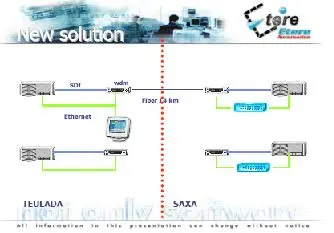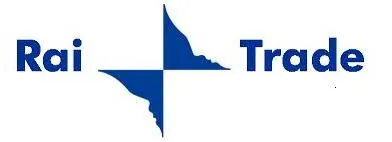RAI Commercials with Etere
19 August 2002RAI chose ETERE Automation to manage and program the new commercial installation for all 3 RAI networks.
As expected, the Italian company has been confirmed again, considering the fact that since 1995 the complete management has been entrusted to ETERE software.
What convinced RAI Trade to reconfirm the software was that the old installation has never stopped, not even for a single frame, for all these 7 long years since the first day of On-air broadcast.
The previous installation was projected mainly to produce tapes with all commercials, and afterwards, experimentally, also to migrate data from Teulada street, headquarter of RAI Trade where the commercials are prepared, to Saxa Rubra where they are broadcasted, for a distance of 14 km. The passage was performed through an optical fiber.
New installation necessities are different from the first one’s. First, it has been designed especially to allow data migration (always through the optical fiber), then a data archive was installed capable of memorizing compressed video on DLT “data” tapes, and so there was no need to use videotapes. Archiving commercials is performed digitally.
This archive allows having a huge quantity of videos with major speed. Clips after being digitalized and compressed only once, will not subdue further treatments, and all that allows not losing the quality of video image that was used to happen previously with normal processes of video duplication.
LMS 1000 has been cancelled, for it had been used as a “video library”, because the videoserver capacity has been enlarged and technologically modernized, especially after the passage from Mjpeg compression to Mpeg compression. Difference of quantity of the occupied space between the old and the new technology is impressive, and to memorize on line the same video quantity kept in a cubic meter, the old technology would request ca. 18 cubic meters, so it has been transferred to compact installations, low cost and low energetic resources.
ETERE controls:
- 1 Qualstar 8833 library, which has been oriented to the innovative DLT technology that promises stability in the future. We know that the technological “stability” of supports is much more important for an archive than “pure” services.
- 2 Profile PVS Grass Valley video servers with 2 Inputs, 6 Outputs
- 2 Deko character generators to broadcast writings and boards. In fact, character and logo generators, besides being based on a PC architecture, are able to display any kind of writing, and so to conform to actual and future features of commercial broadcast
- 2 SDI/PAL converters
- 2 Beta 75 analogical VTRs
- 2 D2 digital VTRs
- 2 IMX digital VTRs
- 10 normal and server PCs. - 4 Serial hubs to command via Ethernet devices with a 422 interface
The archive is actually able to memorize cca. 6000 commercials of 30” every year, that is almost 50 hours. 3-5 years on line are foreseen, that is, 150-250 hours. Capacity of the library is 0.5 TB/year, that is, 2.5 TB.
A Windows 2000 Remote Storage solution was made to command the library, which has the advantage of being a Microsoft product and so a standard on the market with all its advantages. One of them is to allow accessing safely the data for the next 5/10 year.
The software is supposed to migrate from its database towards the SQL architecture capable of managing always-bigger archives and perform complex operations. SQL means major speed, data safety, interchangeability of platforms, that is, to work better and faster.
The new connection with Saxa Rubra totally ignores the 14km distance, allowing a real time control of all remote devices, with big advantages compared to the time of elaboration.
But this is only the first part of the project, because in the future the On-air broadcast system of Saxa Rubra will be modernized. Migration of video asset will not be performed any longer through the optical fiber but through the migration of simple video files, furnished with belonging metadata. We remind you that actually in Teulada Street are not produced only the commercials of 3 main RAI networks, but also of all satellite stations, with an amount of 15 channels.

 Back
Back
